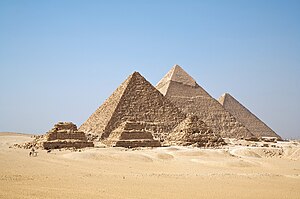January 29, 2016
Journal reference: Science search and more info website
Provided by: Humboldt University of BerlinEuropean scholars used similar techniques
"These computations anticipate the use of similar techniques by European scholars, but they were carried out at least 14 centuries earlier", says Ossendrijver. The so-called Oxford calculators, a group of scholastic mathematicians, who worked at Merton College, Oxford, in the 14th century, are credited with the "Mertonian mean speed theorem". This theorem yields the distance travelled by a uniformly decelerating body, corresponding to the modern formula S=t•(u+v)/2, where u and v are the initial and final velocities.
In the same century Nicole Oresme, a bishop and scholastic philosopher in Paris, devised graphical methods that enabled him to prove this relation. He computed S as the area of a trapezoid of width t and heights u and v. The Babylonian trapezoid procedures can be viewed as a concrete examples of the same computation.
Babylonian trapezoid figures exist in an abstract mathematical space
Furthermore, it was hitherto assumed that the astronomers in Babylon used arithmetical methods but no geometrical ones, even though they were common in Babylonian mathematics since 1800 BCE. Ancient Greek astronomers from the time between 350 BCE and 150 CE are also known for their use of geometrical methods. However, the Babylonian trapezoid texts are distinct from the geometrical calculations of their Greek colleagues. The trapezoid figures do not describe configurations in a real space, but they come about by drawing the velocity of the planet against time. As opposed to the geometrical constructions of the Greek astronomers the Babylonian trapezoid figures exist in an abstract mathematical space, defined by time on the x-axis and velocity on the y-axis.
Cuneiform script
Journal reference: Science search and more info website
Provided by: Humboldt University of BerlinEuropean scholars used similar techniques
"These computations anticipate the use of similar techniques by European scholars, but they were carried out at least 14 centuries earlier", says Ossendrijver. The so-called Oxford calculators, a group of scholastic mathematicians, who worked at Merton College, Oxford, in the 14th century, are credited with the "Mertonian mean speed theorem". This theorem yields the distance travelled by a uniformly decelerating body, corresponding to the modern formula S=t•(u+v)/2, where u and v are the initial and final velocities.
In the same century Nicole Oresme, a bishop and scholastic philosopher in Paris, devised graphical methods that enabled him to prove this relation. He computed S as the area of a trapezoid of width t and heights u and v. The Babylonian trapezoid procedures can be viewed as a concrete examples of the same computation.
Babylonian trapezoid figures exist in an abstract mathematical space
Furthermore, it was hitherto assumed that the astronomers in Babylon used arithmetical methods but no geometrical ones, even though they were common in Babylonian mathematics since 1800 BCE. Ancient Greek astronomers from the time between 350 BCE and 150 CE are also known for their use of geometrical methods. However, the Babylonian trapezoid texts are distinct from the geometrical calculations of their Greek colleagues. The trapezoid figures do not describe configurations in a real space, but they come about by drawing the velocity of the planet against time. As opposed to the geometrical constructions of the Greek astronomers the Babylonian trapezoid figures exist in an abstract mathematical space, defined by time on the x-axis and velocity on the y-axis.
Cuneiform script


Comment